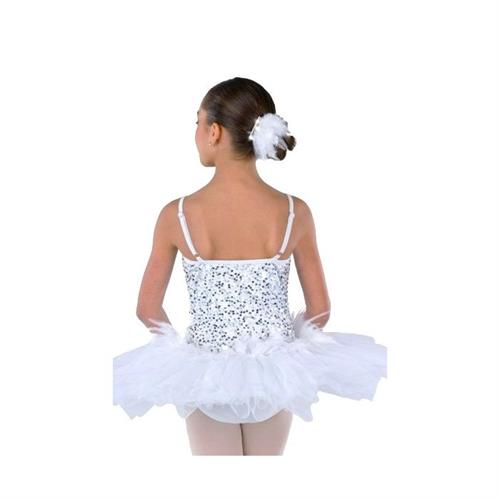Dance Costume: Styles, Fabrics, Fit, and Care

What is a dance costume
A dance costume is the specialized clothing a dancer wears in performance to support movement, communicate character, and enhance stage impact through silhouette, color, and texture.
In theatre dance, costume collaborates with choreography and sets to shape storytelling and audience perception from historical court ballets to contemporary stages.
Brief history and evolution
From ancient ritual garments and masks to European court ballets, costumes have long signified role and spectacle while balancing function and symbolism.
By the 19th–20th centuries, reforms reduced masks and rigid corsetry, ushering freer movement, varied hemlines, and iconic forms like the tutu, with each decade reflecting broader fashion and media trends.
Key styles by genre
Ballroom costumes range from sleek tango silhouettes with slit skirts and rhinestones to flowing waltz gowns in satins that accentuate rise-and-fall motion.
Folk and traditional costumes draw on regional textiles, embellishment, and symbolic accessories that signal identity and social meanings onstage.
Classical Indian dance styles use silk saree constructions, pleats, belts, jewelry, and ankle bells, with variations in ornamentation and color palette across lineages like Kalakshetra and Pandanallur.
Commercial performance categories often group ballet, tap, jazz, lyrical, and contemporary, each with recurring silhouettes that balance genre aesthetics and mobility.
Fabrics that perform
High-performance stretch textiles such as spandex/lycra and nylon deliver elasticity, recovery, and durability for leaps, extensions, and floorwork across styles.
Lightweight sheers including chiffon and mesh create fluid overlays and ventilation without bulk, aiding lyrical, contemporary, and ballet lines under stage light.
Tulle provides structured volume for tutus and romantic skirts, while velvet adds depth and luster for classical and ballroom looks.
Practical blends—polyester for resilience, viscose for drape, and bamboo for breathable comfort—can balance aesthetics, color saturation, and skin feel in performance pieces.
Fabric suppliers and costume-makers commonly stock stretch velvets, panne velvets, satins, sequins, and knits specifically curated for dancewear construction demands.
Get the fit right: measuring essentials
Girth is the most critical measurement for one-piece garments: measure from the top of one shoulder, through the torso and legs, and back to the same shoulder for accurate sizing.
Bust/chest, waist, hips, and inseam should be taken over fitted attire with the dancer standing tall to ensure natural ease and consistent results across size charts.
Studios and designers often emphasize leotard-like measuring conditions, parallel tape, and comparing results to brand charts to minimize returns and alterations.
For cultural styles such as Bharatanatyam, measurement conventions also account for pleat length, hip ease, and movement requirements for specific postures and karanas.
Custom vs ready‑made
| Option | Pros | Cons |
|---|---|---|
| Custom | Originality and exact fit tailored to choreography, body, and fabric preferences enhance comfort and stage confidence . | Higher cost and longer lead times due to bespoke patterning, fittings, and premium materials . |
| Ready‑made | Faster delivery and lower upfront cost with broad genre coverage for recitals and competitions . | Less unique; adjustments may be needed and identical designs may appear at the same event . |
| Semi‑custom | Base designs modified with colorways, embellishments, and fabric swaps to blend speed and individuality . | Limited by base templates and options compared to fully original designs . |
Accessories and packing checklist
Hairpieces, hats, gloves, belts, tiaras, and jewelry should be secured and staged per routine notes to prevent slippage and preserve lines.
Performance kits typically include tights, genre-specific shoes, spare straps, tapes, pins, sewing kit, static spray, and a steamer or wrinkle solution.
Competition packing lists commonly add makeup, hair supplies, first-aid items, hydration, snacks, and backups for tights and accessories to handle quick changes.
Care and maintenance
Hand wash delicate dancewear in cold water with mild detergent, avoid bleach, separate colors, and air dry flat or on a hanger away from heat to preserve elasticity and finish.
Manufacturers advise against machine washing specialty costumes with sequins, velvet, satin, or jewels, recommending spot treatments and careful airing when needed.
Professional tips include steaming or careful ironing per fiber, flipping tutus upside down to maintain bounce, and promptly treating stains with appropriate agents.
Some vendors provide garment care services for group orders, which can be useful after tour runs and multi-show weekends.
Cultural sensitivity and ethics
Cultural appropriation occurs when costumes and choreography borrow sacred or stereotyped elements without training, context, or respect, especially from marginalized cultures.
Competition judges and educators recommend consulting experts, compensating culture-bearers, and aligning intent with authentic representation rather than exoticized catalog tropes.
Studios can formalize guidelines, offer resources, and program master classes to foster cultural appreciation and accuracy in movement and costuming.
Choosing the right dance costume
Align the costume with theme, narrative, and genre so silhouette, color, and materials amplify choreography rather than distract from it.
Prioritize freedom of movement, coverage, and age-appropriateness to support confidence, rehearsal efficiency, and adjudication standards across venues.
Evaluate budget, timelines, and compliance rules early, while matching fabric performance to choreography intensity and lighting conditions.
Genre snapshots and examples
Tango and Latin designs often employ stretch bases with high slits, rhinestones, and bold prints for sharp accents and dynamic contrast on turns.
Waltz and foxtrot typically favor lighter silks and satin finishes that extend optical flow, especially at ankle length for partnered travel.
Folk ensembles may integrate regional embroidery, beadwork, and headpieces that communicate social cues and historic origins.
Bharatanatyam and related Indian classical costumes use vibrant silk combinations, structured pleats, temple jewelry, and ghungroos to highlight rhythm and geometry.
Practical studio workflow tips
Build measurement days with standardized attire and assigned assistants to collect girth-first data consistently across age groups and bodies.
Lock in suppliers for fabric swatches and size sets, then prototype early for choreography stress tests before committing to full orders.
Create routine-level accessory maps and packing checklists for dress rehearsals to catch snares, slippage, or visibility issues in time.
Trend notes and stage impact
Contemporary programs increasingly prefer lighter, modern skirts and streamlined silhouettes that photograph cleanly and enable partnering.
Strategic use of mesh, chiffon, and selective embellishment can deliver dimension under light without restricting torso mobility or floorwork transitions.
Final take
Selecting a dance costume means harmonizing style, fabric, and fit with choreography and culture, ensuring expressive clarity and safe, confident movement under lights.
With accurate measurements, thoughtful care, ethical choices, and smart sourcing, costumes can elevate stories while standing up to rehearsal realities and performance demands.





